2022 Update: With the intense heat of a Texas summer, it wasn’t my plan to transplant two large Red Oak trees – but that’s just how things went down. Worse yet, we’ve had temperatures as high as 107-degrees of late, which is extreme even for here. It’s been relentless.
There was no question I had to find a way to water each tree with consistency and retain that moisture as best possible. The trees were a big investment, and these were terrible conditions for transplanting. To cut right to the bottom-line, I used 1) a top quality slow release tree watering bag around the base of each of the large trees and 2) plenty of mulch to retain the moisture and minimize evaporation. Below, you’ll see some photos and more detail – but that’s the essence. And like all things that tend to work, it’s pretty simple once you know. But not knowing, even if just for a few days, could put the newly transplanted trees at significant risk.
Summer Transplanting My Red Oak Trees
Below are a couple of shots of the freshly transplanted Red Oak trees. They’re huge, as you can see, and they replaced two dying Bradford Pears that were planted at the time the neighborhood was built.
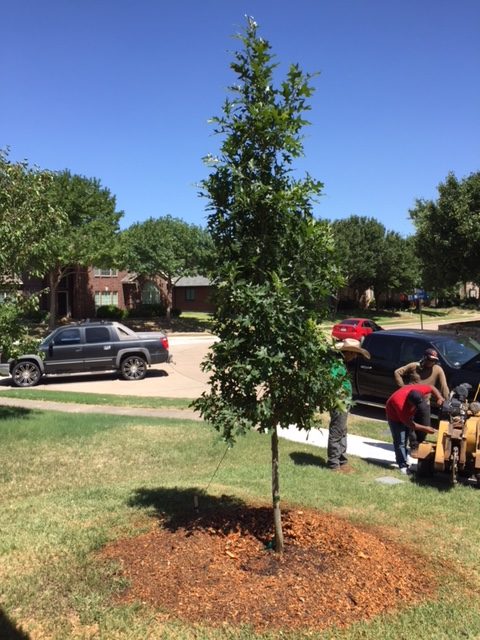
Bradford Pears are inexpensive and beautiful… however, they have a 15-year life expectancy and then, just like that, they drop dead and fall down on your property one day. Our development was built in 2002, so now in 2018, the trees are all 16 years old. We’ve had several neighbors with Bradford Pear trees simply fall down with little warning. Ours were leaning about 20-30 degrees, a HUGE change from years earlier. We had a neighbor lose a huge one 2 weeks earlier to a mild rain storm with heavy winds. I didn’t want to take a chance as my wife and son both park out front, almost directly in front of the two dying trees we were getting removed. Our HOA has a ‘one tree on each side of the walkway policy’ in full effect. Along with that, there are only 4 trees you can pick from, so we went with 2 Red Oaks. Sturdy, long life expectancy and plenty of shade once they fill out. Plus, they’re fast-growing – so 5-7 years from now, I should be in nice shape.
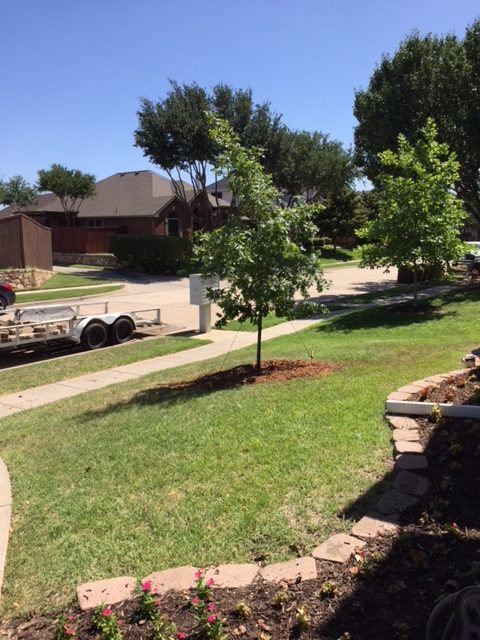
So, what are the best ways to protect plants from heat like this?
A little bit of research pointed us to this StarTribune article, discussing the best ways to water plants during intense heat. And my take-away, especially after talking with my some of my neighbors and landscaping crew, were the two items I mentioned above: mulch and continuous, consistent, slow release watering. Let’s talk about the slow release watering first.
Caring for Transplanted Trees: Slow Release Tree Watering
My neighbor Paul recommended a solution I didn’t know about – the Treegator slow release tree watering bag. Have a quick glance and note the Amazon reviews. This product is cheap, it’s low-tech and it’s highly recommended. All things I like.
In essence, it’s a high-capacity bag you fill with water that sits over the planted root ball – and it leaks. It intentionally leaks at a designated rate to give your tree 5-9 hours of proper, consistent slow release watering. So, you’re not standing there for 15 minutes deep root watering each tree periodically. (In 100-degree weather for me.) Instead, you fill this bag and come back to refill at designated intervals. For me, the recommended refill interval was twice a week, maximum, to prevent risk of over-watering.
Here’s a manufacturer’s stock photo that shows it nicely…
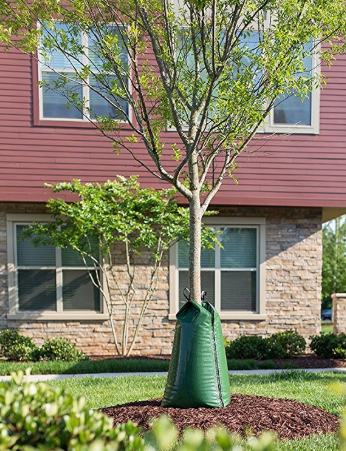
But even better, here are a few photos of the slow release tree watering bag in use with my Red Oaks at my house right now…
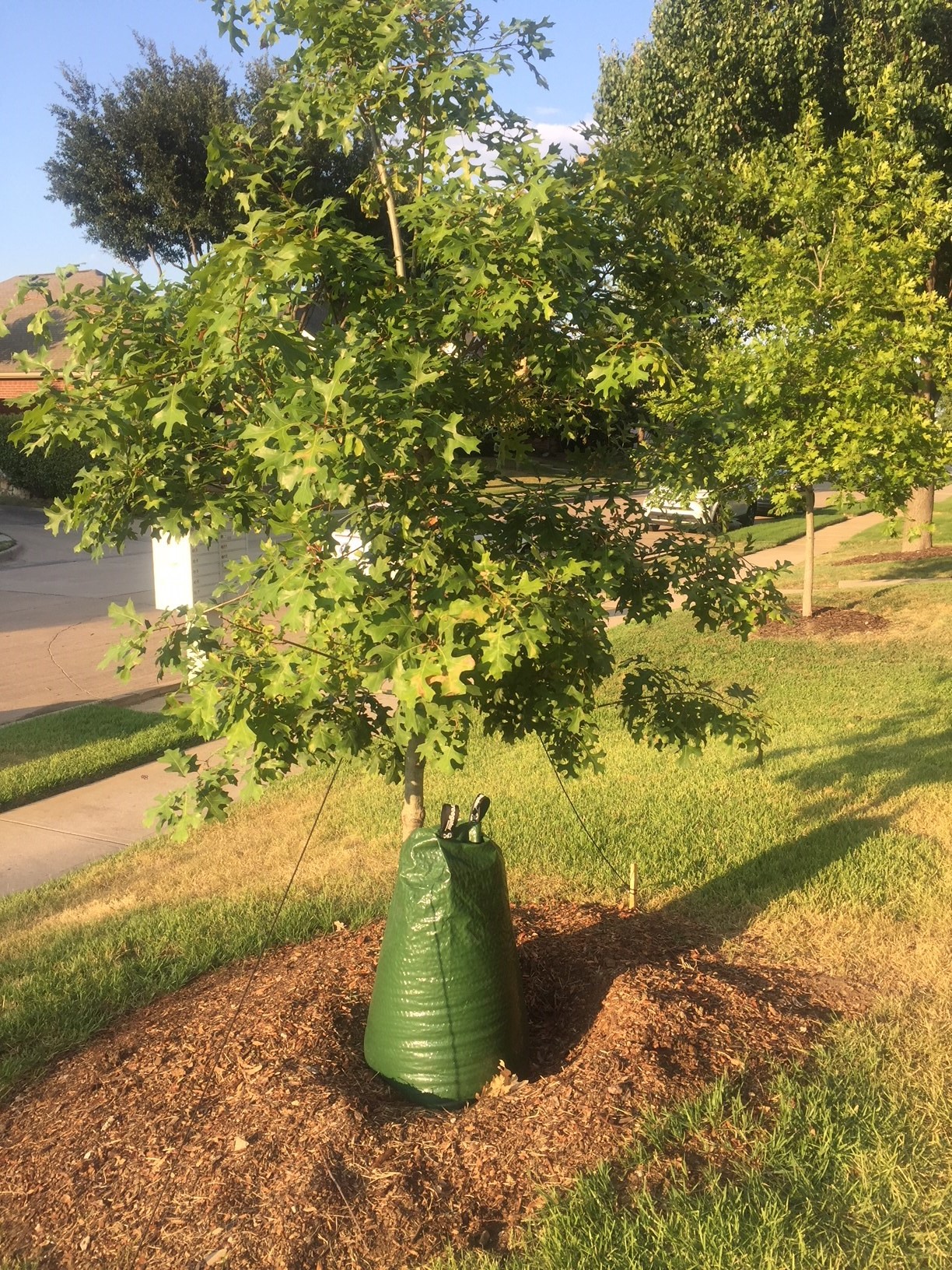
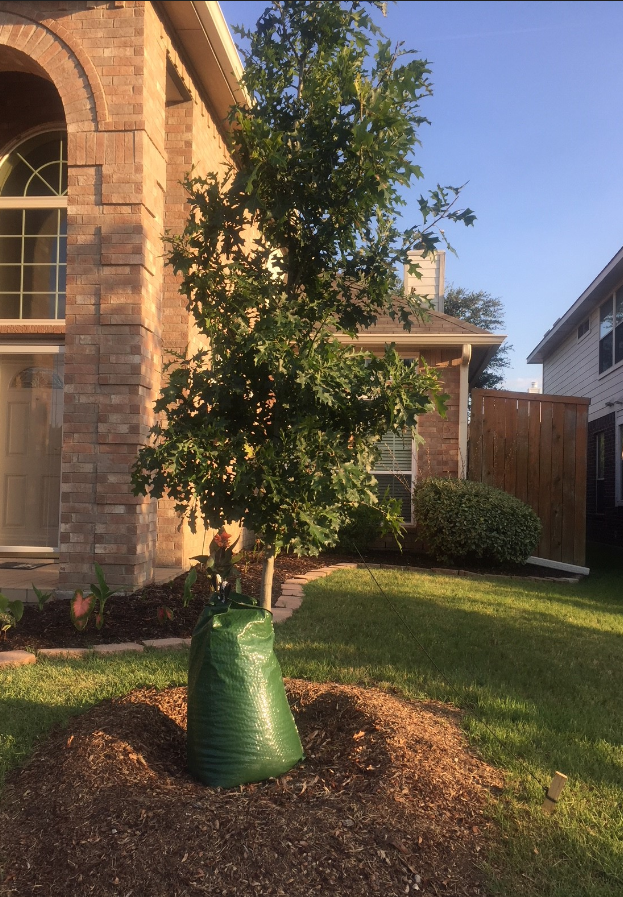
Filling the bag, as needed, with my garden hose is pretty simple…
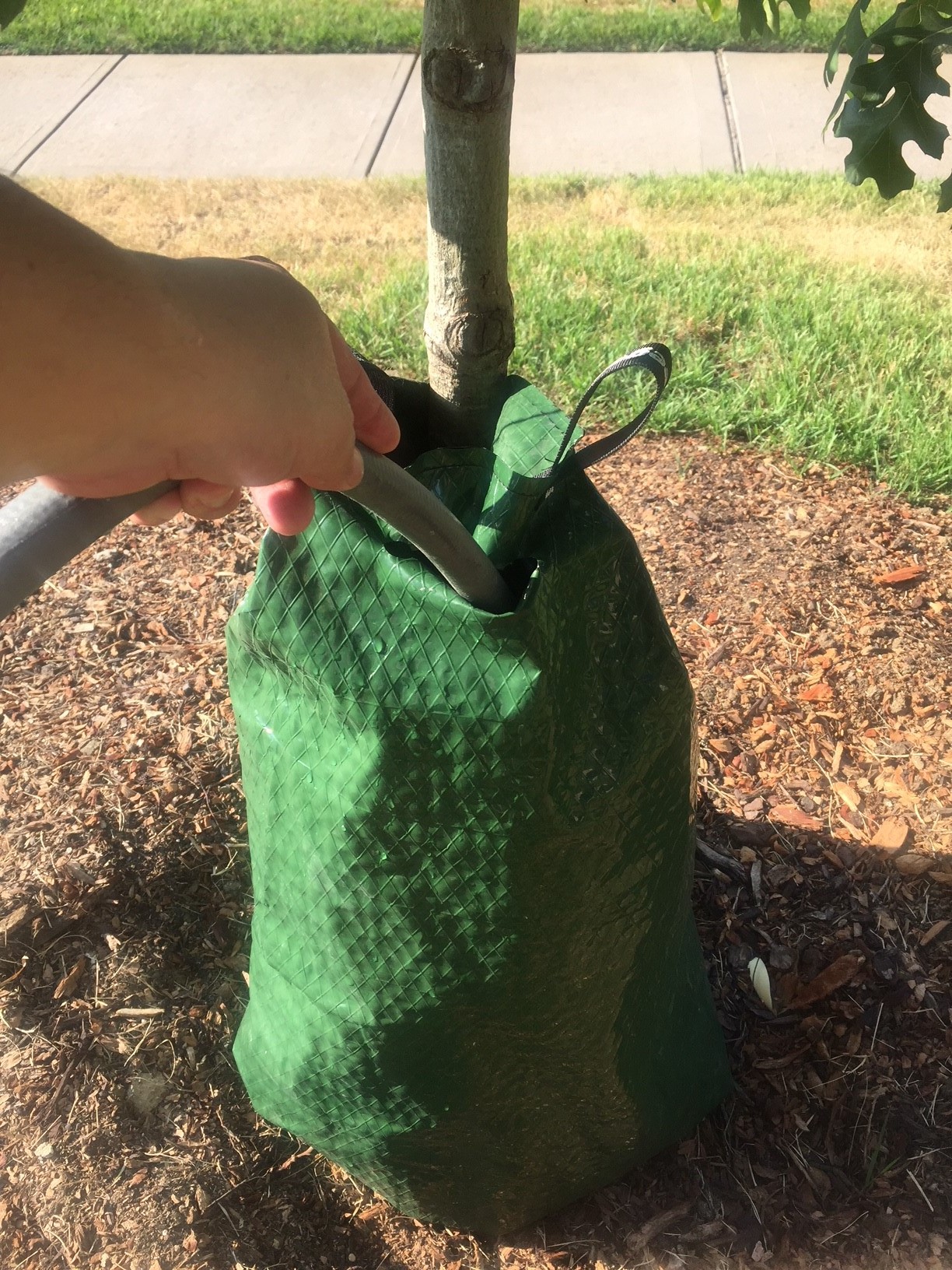
And there’s even a smaller version (what they call a Treegator Junior) that I’m using for my Crape Myrtle sapling…
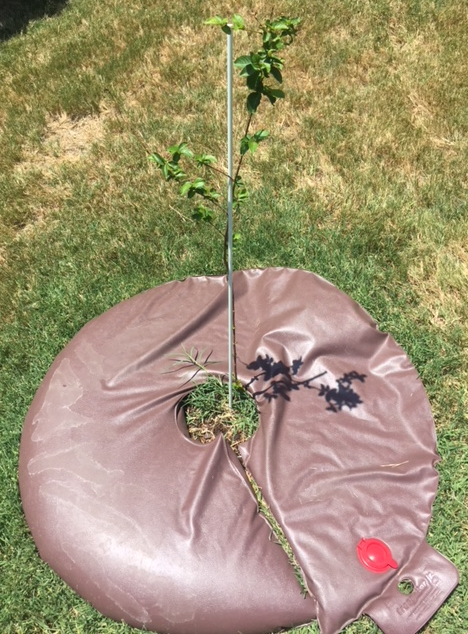
Mulch Beds for Landscapes & Tree Moisture Retention
Mulch is another cheap, easy and low-tech way of maximizing the health of your trees and the health of most any landscape bed. Not only does mulch naturally retain moisture, but as the mulch breaks down over time – it acts almost as a slow release fertilizer. I’m sure I’m not telling you anything you don’t know here. But be sure, especially in a high-heat situation like I’m describing above, that you don’t overlook this. It’s cheap additional “insurance” (to get the most out of your watering efforts) and it looks great too. Get a couple of bags of mulch – and when it thins out over the coming weeks and months, replace it. Maintain it.
Texas Tree Shade and a Beautiful Facade
The challenges of maintaining a beautiful landscape façade vary from state to state, of course. But 107 degrees is just a bit much. For most anywhere. I’m hopeful that my trees will thrive and the small investment in slow release tree watering bags and mulch are going to pay off significantly. Because I want my driveway back in shade. Pretty much ASAP.
On the upside, looks like a cold front is coming through in a few days [below]. Am I the only one thinking this is crazy?
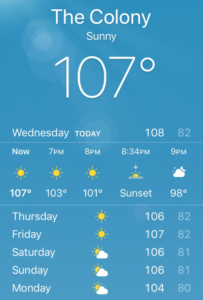

Leave a Reply